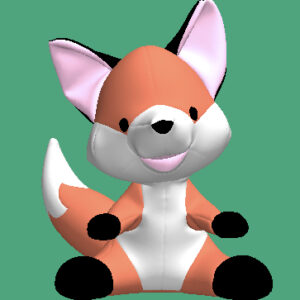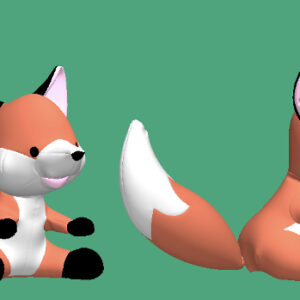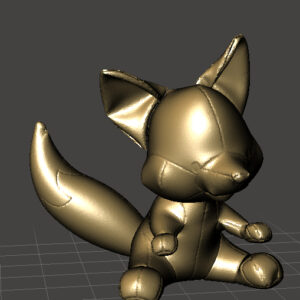as my mind continue wondering… I gave squirrel a friend.
what I’m trying to practice here is how to efficiently modify the pattern not just for sewing but also to achieve a family of characters in design. IMO, successful toy/character designs share same elements in some parts and proportion may be different but keeps same sewing patterns. (shop talk here…) successful animated film has this formula down by mix & match similar parts with proportion changes and make sure that facial expression and body pose shares similar characteristics so they blend together with rest of the world. I check out “art of~” books on CG animated films since one of the proud moment in CG film is that “how many background characters and creatures we made” and usually have 2 page spread of character tables. For example: The Art of How to Train Your Dragon 2, The Art of Kung Fu Panda 2
I think sequels have more background characters in general since they are done introducing the core characters in the first movie.
つづきにリス君にお友達を作りました(もうボ〜ってしないですよ、いくらなんでも)
私が練習している事はパターンの使い回しと複数のキャラデザインをどうやってまとめるかです。コレクション物として成功しているおもちゃや映画のキャラデザインは似たようなとこを必ず一体一体がシャアしていますよね。ぬいぐるみなんかでは必ずパターンや縫い方が似たようなパーツが多いです。米国のアニメーション映画ではよくバックグラウンドのキャラは同じ顔や体の一部のデザイをバランスを変えながらもモデリングしてみたり、表情や姿勢の特徴をシェアしてみたりと、お互いがその世界になじむように出来ています。私はCGアニメのアート本をよくみます。特にCGではどれだけ数のキャラがこの映画にあるかを結構おおきな表みたいにレイアウトしていて、とてもみやすいです。特に続編映画本は第一作目にメインキャラを注目した後なので、なぜかバックグラウンドのキャラの数が多い...The Art of How to Train Your Dragon 2, The Art of Kung Fu Panda 2が個人的にはキャラクターリリストがみやすい本とてオススメです。




